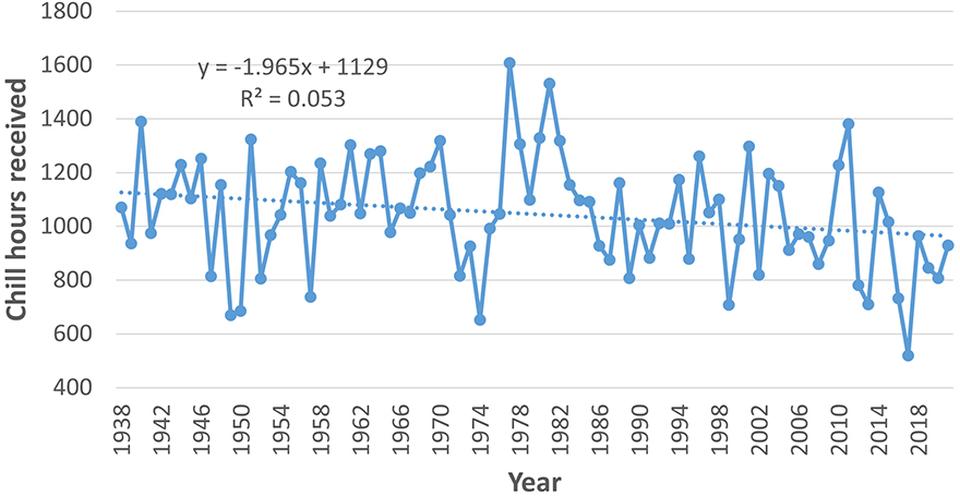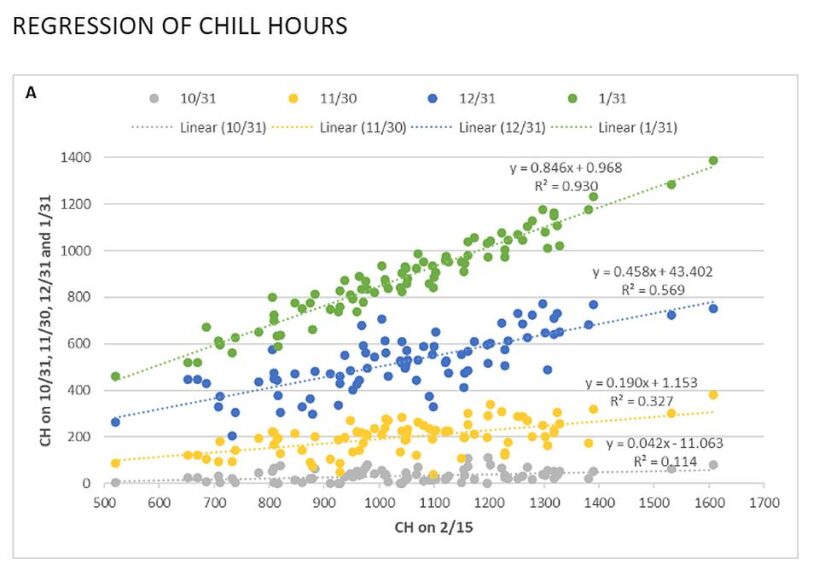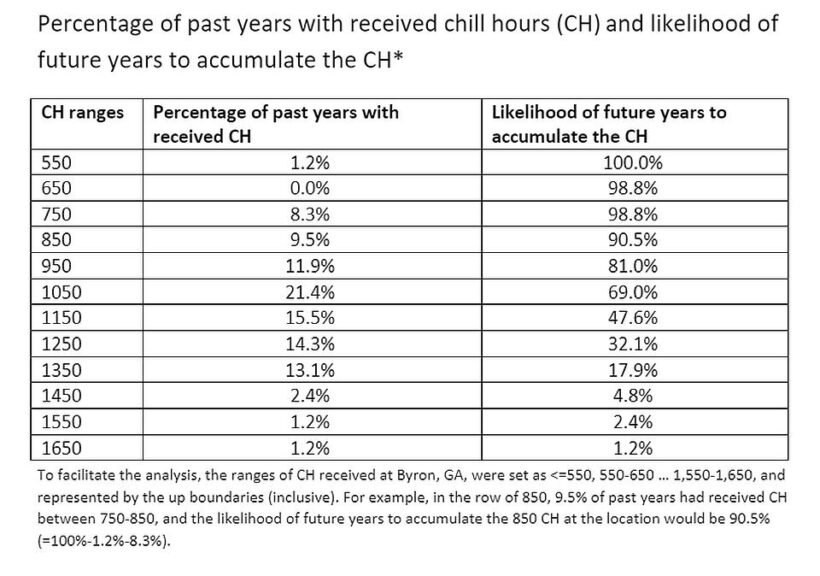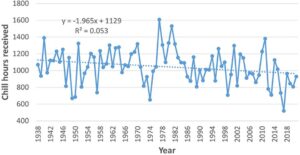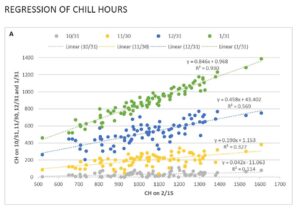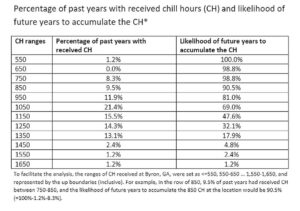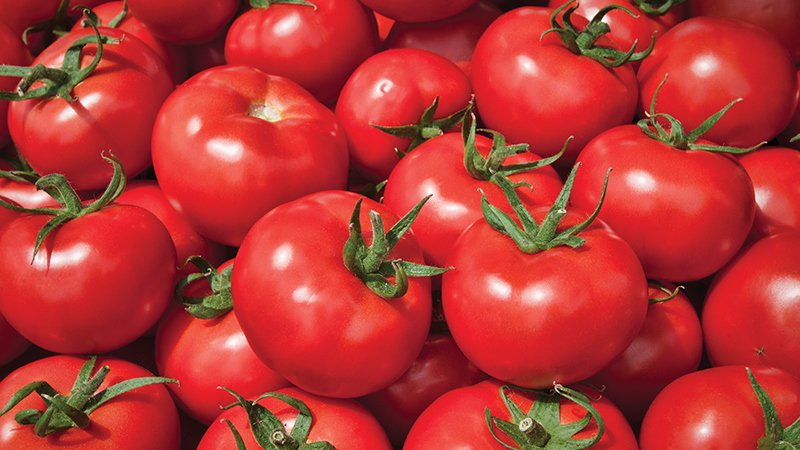What Can Past Chill Hours Foretell for Peach Production in the Southeast U.S.?
The chilling requirement of a peach cultivar is a trait of the chilling time needed for normal bud development in the winter to ready timely budbreak in the spring. The chilling requirement usually refers to chill hours (CH) in production areas, such as mid-Georgia, where spring begins warming in late February. Chill hours are calculated as the sum of hours below 7.2°C (45°F) from Oct. 1 to the following Feb. 15.
Several modified calculation approaches or models, such as chill units or chill portions, are also developed with adjustment of the chilling efficacy in different temperature ranges or climatic regions where CH are less suitable.
It is well known that satisfaction for chilling requirements of peach cultivars during the winter is a prerequisite for timely budbreak in the spring and potential full crop in the season. Inadequate chill may result in varying degrees of crop loss, depending on the amount of chill shortage. The CH recorded nearly a century ago at Byron, GA, show the trend and speak to future change of chill hours in the related areas.
TREND OF CHILL HOURS
The CH received between 1938 and 2021 in Byron, GA, fluctuated irregularly, with an average of 1,044, and trended downward steadily at a slope of -1.965 (Fig. 1 in photo slideshow above). The trend also corroborated the fact higher average CH (1,087) in the early five decades than the recent five decades (959).
Estimated linearly, the averages dropped approximately 11.78% over the years. Calculated monthly, declines in chilling time in January and February contributed most to the shortened CH. That trend set a record low CH (520) at Byron, GA, in 2017. Most high-chill peach trees (850+ CH) in the region failed to bloom and fruit, and foliar budbreak was delayed up to five weeks, depending on how much chill shortage relative to chilling requirements of
peach cultivars.
If this trend continues, there will be more incidences of chill inadequacy in the Southeast. In addition, the other four lowest CH were 669, 686, 662, and 708, occurring in 1949, 1950, 1974, and 1999, respectively (Fig. 1 in photo slideshow above). The interval years between those incidences in 1950, 1974, 1999, and 2017 are 24, 25, and 18, implying the infrequency of extremely insufficient chilling cases in the past and the possibility of more cases in the future.
PREDICTION OF CHILL HOURS
Prediction of CH would help growers to adjust orchard management in a timely manner and decide the need for chemical sprays to stimulate budbreak in cases of chill inadequacy. The correlations of CH on Feb. 15 with those on Oct. 31, Nov. 30, Dec. 31, and Jan. 31 were strengthened gradually along with the increasing R2 values, suggesting more accuracy of the prediction that was done later. However, the CH on Feb. 15 was much less correlated with the chilling time within each of the four months: October, November, December, and January.
LIKELY FUTURE IN BYRON, GA
The percentages of past years with received CH were used to estimate the likelihood of future years to accumulate these CH at the location. It is certain the lower chilling requirement a cultivar does have, the higher likelihood it will be satisfied. The fact probably explains, for example, that the chilling requirements of many cultivars used in mid-Georgia commercial production are around 850 CH, which could maximize the likelihood of satisfaction for chilling requirements and minimize the risk of spring frost as they bloom relatively later in the region.
IMPLICATIONS
The trend of CH in Byron, GA, indicates chill shortage will occur more with current commercial cultivars in the region, which should be taken into consideration on chill requirements in breeding and cultivar needs for the industry. Increasing incidences of crop losses to unpredictable climatic conditions are unsustainable. Improvement of cultivars’ resilience to suboptimal weather conditions should be among the top priorities in future breeding and horticultural research.




